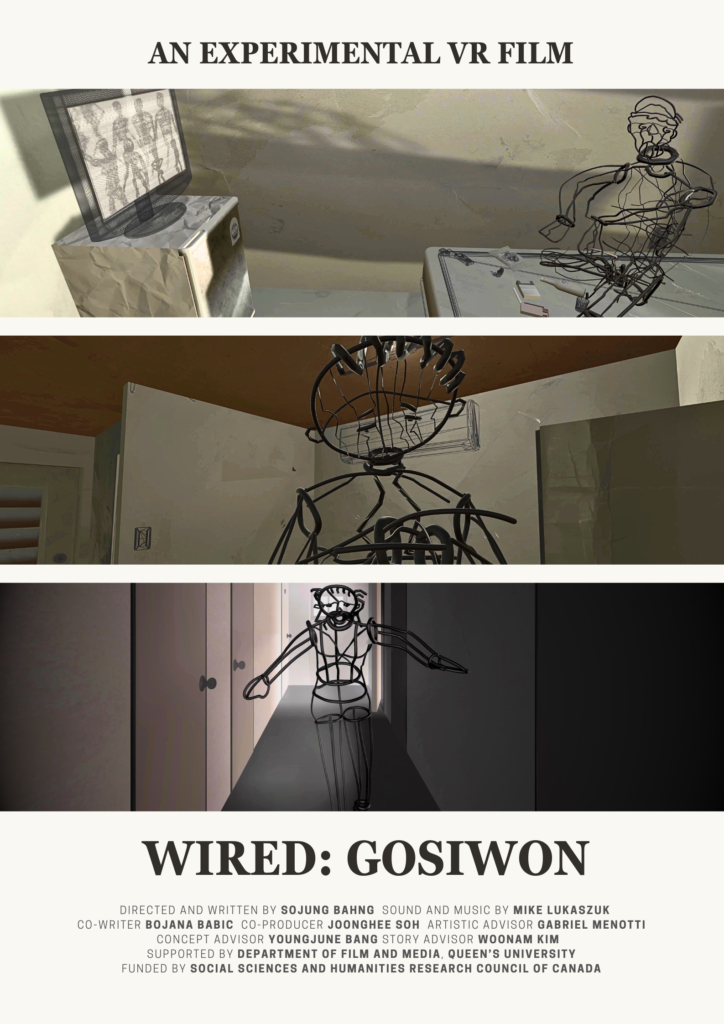
Wired: Gosiwon is a 3D animated VR film that portrays three characters living in Gosiwon, which are low-cost, single-room accommodations in South Korea that are often susceptible to fires. Wired figures are used to symbolize the entangled and fragile nature of individuals in contemporary life and to question the complex realities and substances emerging from emptiness.
The film integrates generative AI for textures and machine learning systems for sound and background music as assets that belong in a virtual world. By leveraging AI’s imperfections, the film reveals the contradictions and complexities of data within the physical and digital realities that we inhabit.
Co-creation with Artificial Intelligence (AI)
In this work, machine learning (ML) for sound was implemented by Mike Lukaszuk (Sound & Music Director). This approach relied on classification, in which sound recordings were continuously fed into a system that returned enhanced or degraded versions of the audio files based on how accurately sound sources such as musical instruments could be detected. ML was also applied to generate a collection of sounds using regression algorithms on the software parameters of a computer-generated piano, allowing for a large number of variations from a small amount of training data. This process results in a series of sounds that each relate to the training data in different and unexpected ways, ranging from characteristically pianistic moments to abstract electronic drones. With both classification and regression, we emphasize that the impression of failure allows the audience to discover hidden aspects of the sound and experience new variations on familiar sounds.
In addition, generative AI was utilized during pre-production to design characters made of wires and to generate 2D textures for the virtual environment. Text-to-image and image-to-image AI techniques were employed to create uncanny and imperfect images that evoke a tactile yet strange sensation for familiar materials and objects. By blending these AI-generated textures with real-world captured textures, the work intentionally blurs the boundary between AI-generated imagery and actual physical textures, provoking a sense of confusion about the distinction between virtually simulated and embodied physical realities.
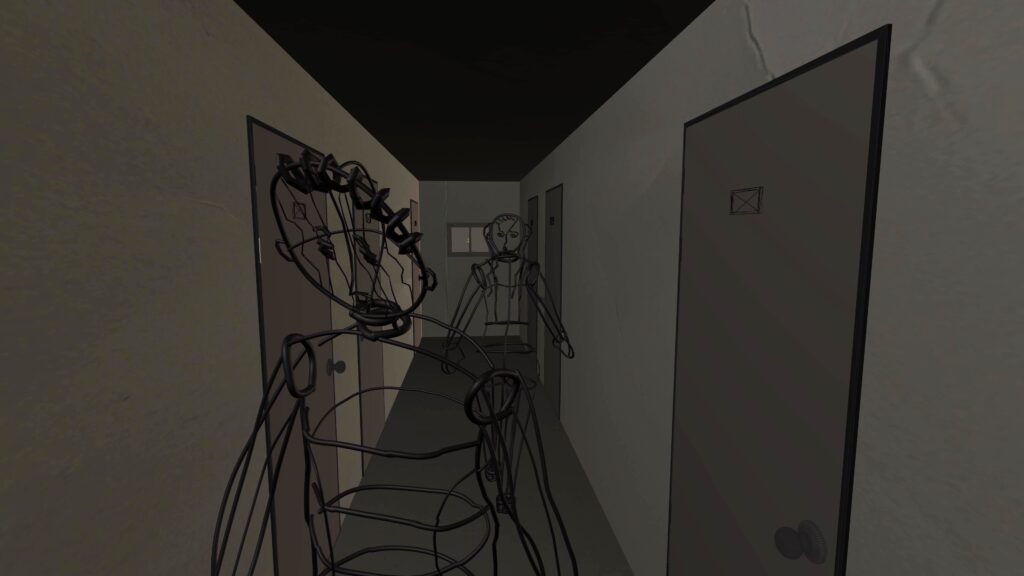
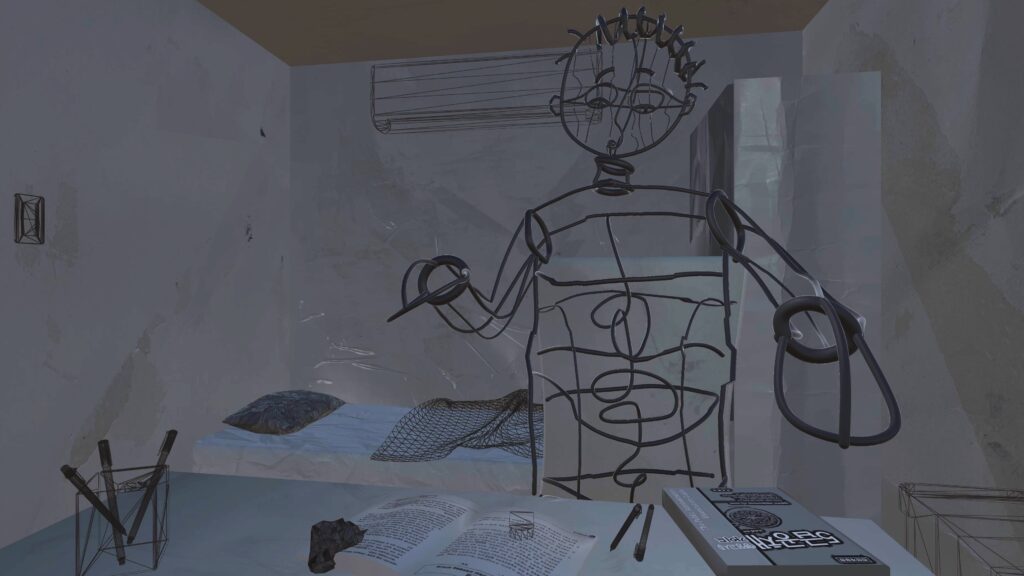
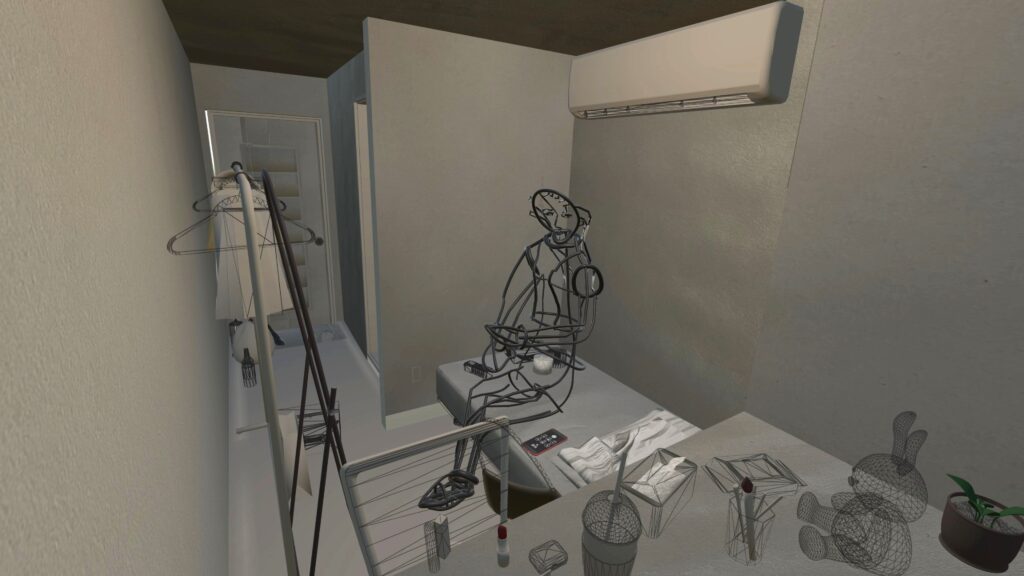
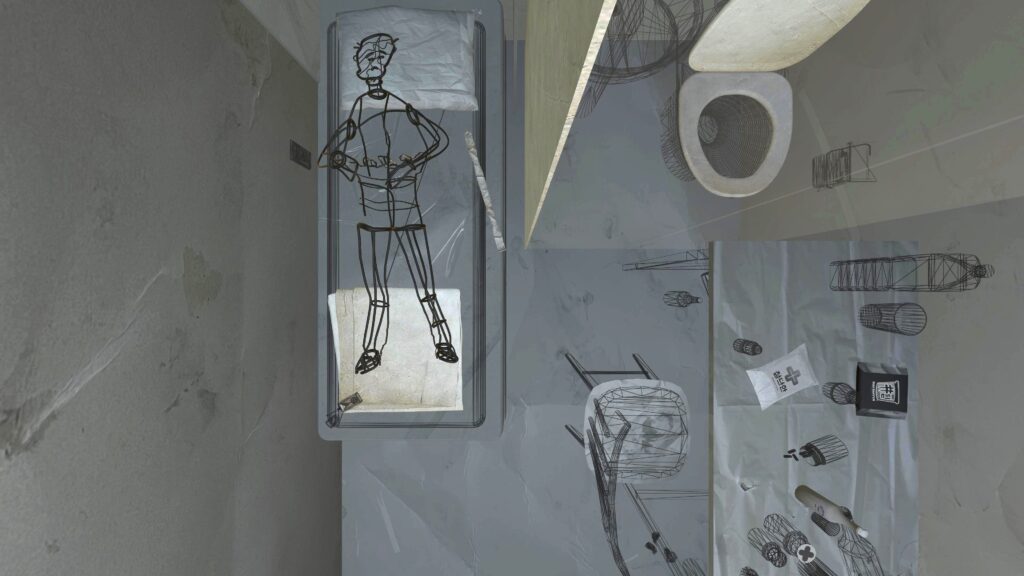


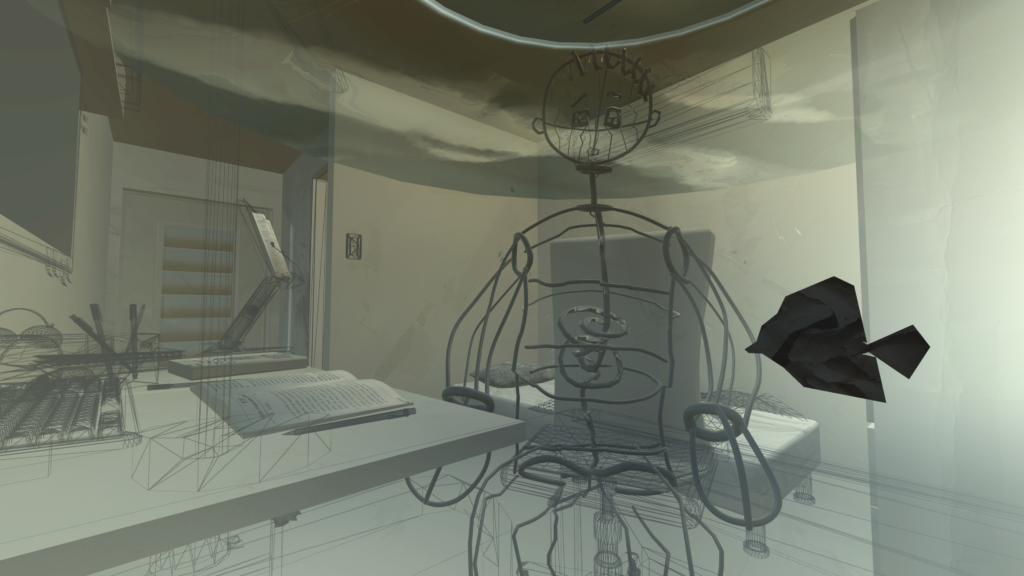
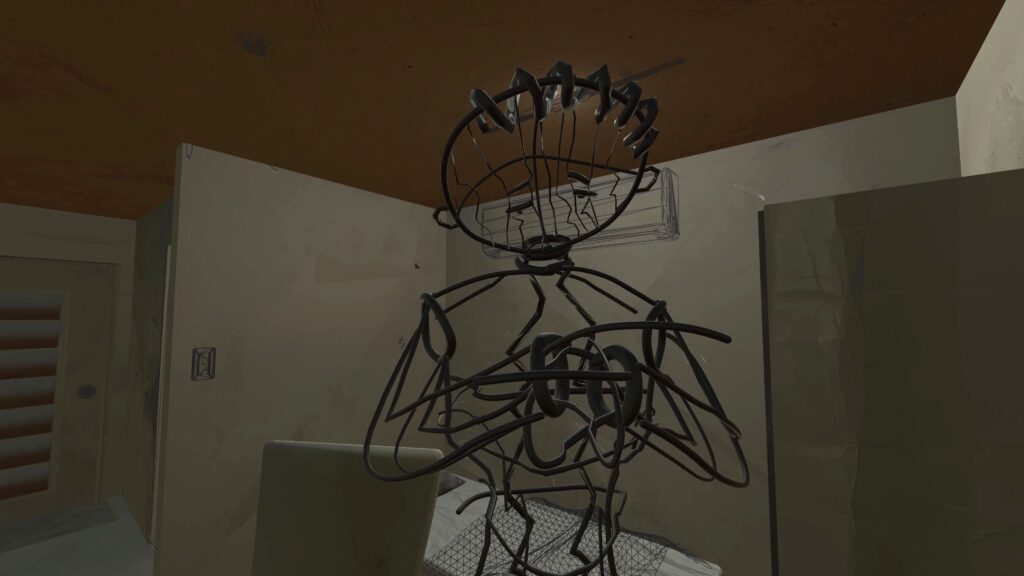
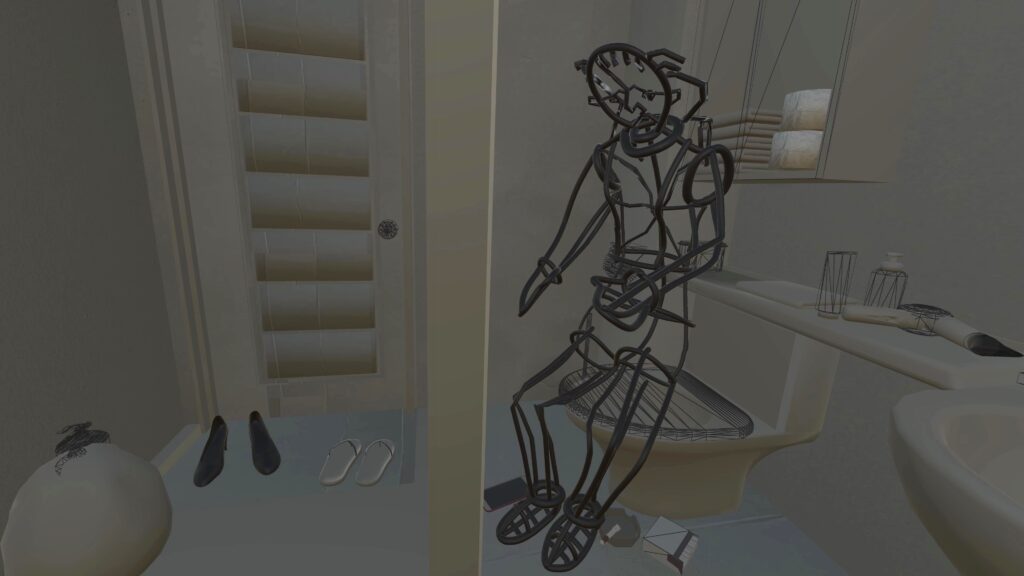
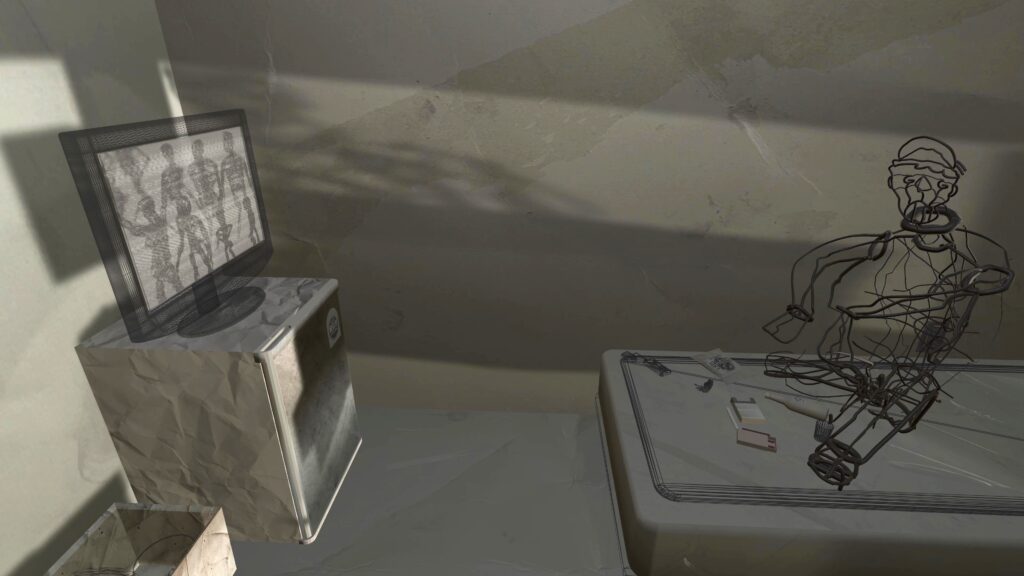

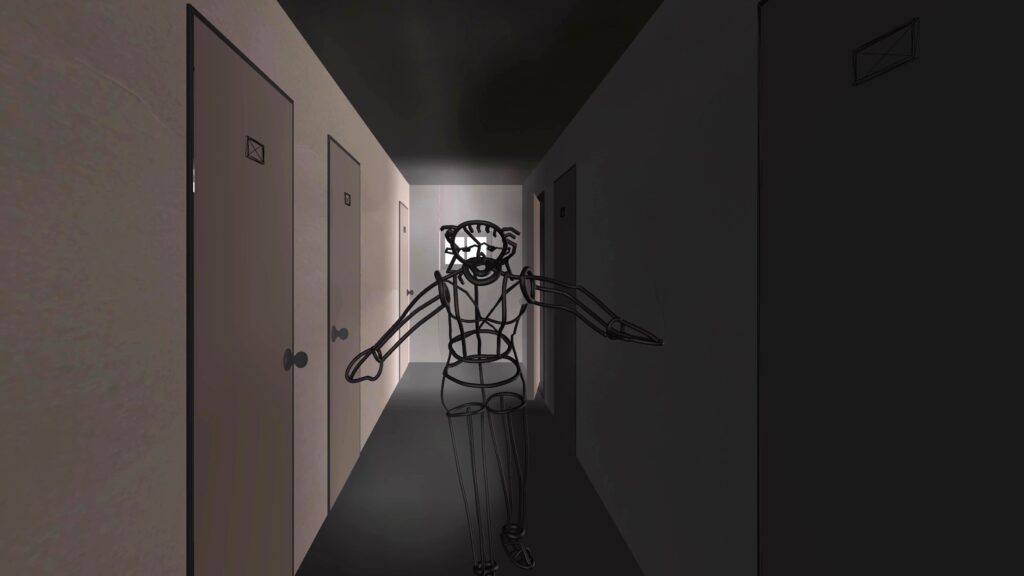
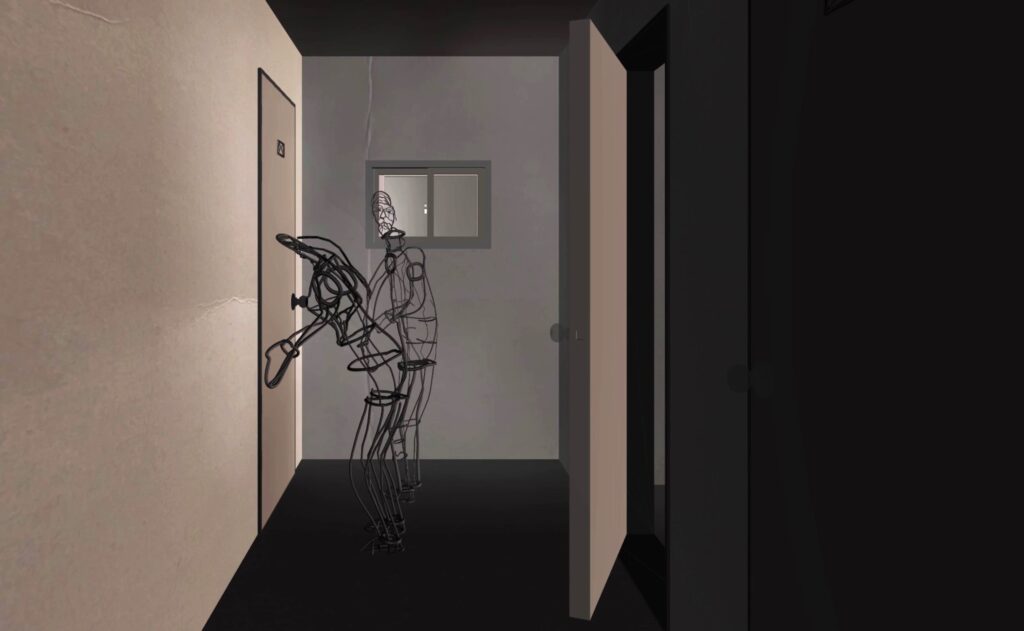
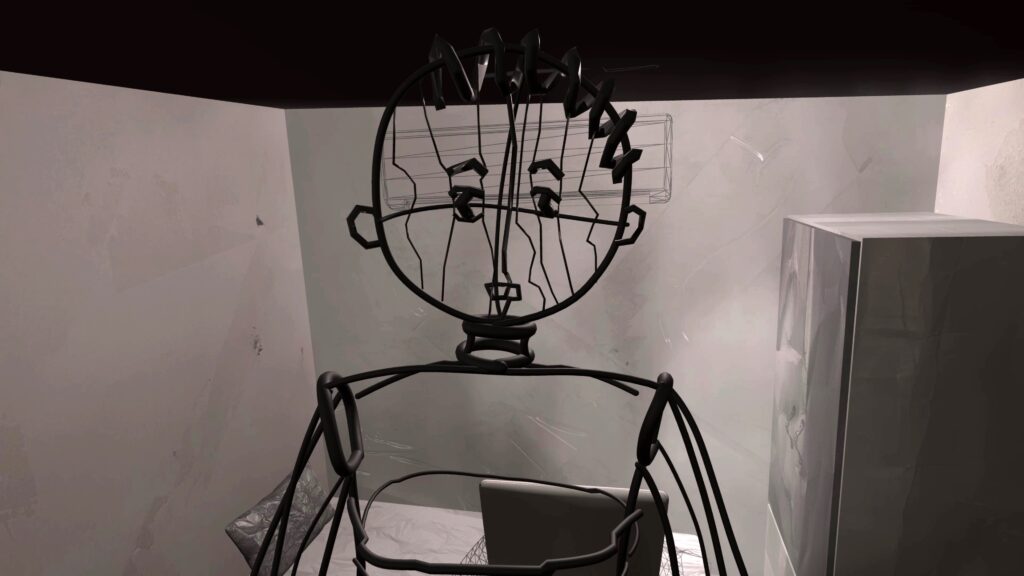
Artist Statement
Wired: Gosiwon is a VR project that emerged from the larger research initiative Meta-Metaverse, which explores critical and reflective approaches to the metaverse through digital art. Rooted in the idea that the digital world is constructed through wireframe geometry, the project reflects on the metaphysical notion of a virtually built world arising from emptiness, an idea that resonates with Buddhist concepts such as “form is emptiness, and emptiness is form.”
At the center of this work is the Gosiwon, a form of single-room accommodation in South Korea, often inhabited by low-income individuals and students. It is a spatial embodiment of social isolation and economic precarity. Having lived in a Gosiwon myself during college, I draw from personal memory and cultural specificity to explore broader questions about contemporary life. In the metaverse, I imagine that we might find ourselves in similar confined units, virtual single rooms that mirror the way we already live within boundaries, both online and off.
Technically, the project was shaped by challenges and experimentation. The wired characters were created using Gravity Sketch, a VR 3D drawing tool. Unlike typical mesh models, these figures, composed entirely of wire, were extremely difficult to rig and animate due to their lack of surface geometry. To create a single character that moved believably, I went through hundreds of iterations. This became a hands-on, repetitive process that explored the limits and affordances of 3D geometry through craft and technical trial.
Working with collaborator Mike Lukaszuk, we also experimented with generative AI and machine learning systems to develop soundscapes, background music, and image textures. Rather than streamlining the process, these tools revealed their own imperfections: glitches, uncanny artifacts, and unexpected audiovisual effects. Embracing these moments of failure, we chose to highlight the contradictions and asymmetries embedded in data-driven environments. Through this, the project examines the fragile boundaries between physical and digital realities, control and entropy, presence and absence.

Wired: Gosiwon won Second Prize in the VR Section at Digital Arts Zurich 2024, the largest festival for digital culture in Switzerland. The work is also officially selected for the Awareness Festival 2024 in Los Angeles and the Festival of International Virtual & Augmented Reality Stories (FIVARS) 2024 in Toronto.
.
Wired Gosiwon – Spatial World (Real-Time Virtual World Version via Spatial.io)
There is a real-time virtual world version that viewers can explore using a PC, mobile device, or VR headset through the Spatial.io platform, alongside other users. Viewers can navigate through the Gosiwon environment and interact with the three characters.

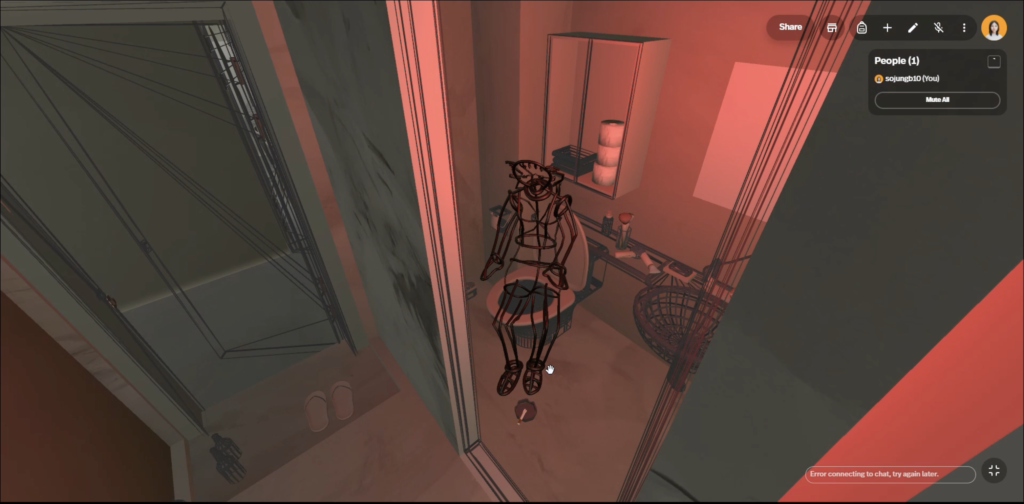



You can access the world using the following link (Spatial ID and login required):
https://www.spatial.io/s/Wired-Gosiwon-Spatial-World-681a93df72cf55d3b7251983?share=4176325790134551848
.
This work is part of the research project called Meta-metaverse: digital art-based research on reflective approaches to the metaverse, funded by the Social Sciences and Humanities Research Council (SSHRC) and supported by the Department of Film and Media at Queen’s University.